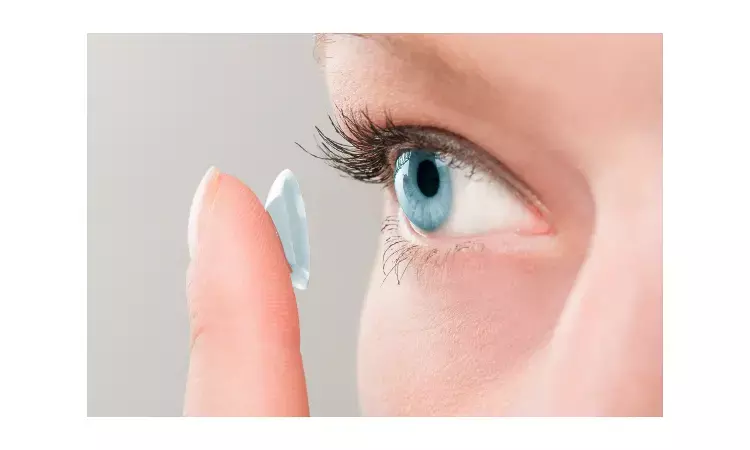- Home
- Medical news & Guidelines
- Anesthesiology
- Cardiology and CTVS
- Critical Care
- Dentistry
- Dermatology
- Diabetes and Endocrinology
- ENT
- Gastroenterology
- Medicine
- Nephrology
- Neurology
- Obstretics-Gynaecology
- Oncology
- Ophthalmology
- Orthopaedics
- Pediatrics-Neonatology
- Psychiatry
- Pulmonology
- Radiology
- Surgery
- Urology
- Laboratory Medicine
- Diet
- Nursing
- Paramedical
- Physiotherapy
- Health news
- Fact Check
- Bone Health Fact Check
- Brain Health Fact Check
- Cancer Related Fact Check
- Child Care Fact Check
- Dental and oral health fact check
- Diabetes and metabolic health fact check
- Diet and Nutrition Fact Check
- Eye and ENT Care Fact Check
- Fitness fact check
- Gut health fact check
- Heart health fact check
- Kidney health fact check
- Medical education fact check
- Men's health fact check
- Respiratory fact check
- Skin and hair care fact check
- Vaccine and Immunization fact check
- Women's health fact check
- AYUSH
- State News
- Andaman and Nicobar Islands
- Andhra Pradesh
- Arunachal Pradesh
- Assam
- Bihar
- Chandigarh
- Chattisgarh
- Dadra and Nagar Haveli
- Daman and Diu
- Delhi
- Goa
- Gujarat
- Haryana
- Himachal Pradesh
- Jammu & Kashmir
- Jharkhand
- Karnataka
- Kerala
- Ladakh
- Lakshadweep
- Madhya Pradesh
- Maharashtra
- Manipur
- Meghalaya
- Mizoram
- Nagaland
- Odisha
- Puducherry
- Punjab
- Rajasthan
- Sikkim
- Tamil Nadu
- Telangana
- Tripura
- Uttar Pradesh
- Uttrakhand
- West Bengal
- Medical Education
- Industry
Multifocal soft contact lenses to reduce asthenopic symptoms in myopic patients: Study

Asthenopic symptoms are very common around 46% of adults have been reported to experience asthenopia during or after working on a computer and 23% of schoolchildren have been reported to have asthenopic symptoms. A new study by Dr Alex C.H. Ong reported that use of multifocal soft contact lenses for a one month period was associated with reduced severity of asthenopic symptoms but had no changes in accomadative lag.
The study is published in The Journal of the British Contact Lens Association.
The objective of the study was to evaluate the efficacy of multifocal soft contact lenses to reduce asthenopic symptoms in myopes with accommodative lag.
The study included twenty-four myopic participants, aged 18–35 years, with mean spherical equivalent (MSE) of ≤ -0.75D, were recruited in a randomised, double-blind crossover study. All participants were existing contact lens wearer with near orthophoria or esophoria, presenting with subjective asthenopic symptoms at baseline [Convergence Insufficiency Symptom Survey (CISS) score ≥ 21] and a lag of accommodation ≥ +0.75 D. All participants were initially fitted with single vision contact lenses for a one month period. Participants were then randomly assigned 1:1 to wear low add or high add multifocal soft contact lenses for a further month. After this period, the groups were reversed. Data were collected at baseline and following one month's wear of each lens. Change in CISS score was evaluated as the primary outcome measure, while secondary outcome measures were changes in accommodative lag and heterophoria status.
The results of the study were found to be
• Baseline CISS score was (mean ± SD) 25.04 ± 4.58. Post-intervention scores were as follows: single vision: 24.46 ± 4.59, low add: 12.17 ± 6.89, high add: 13.71 ± 7.23.
• Both low add and high add multifocal soft contact lens wear was associated with an improvement in CISS score compared to baseline CISS and single vision (all p < 0.01).
• No significant difference was found between the CISS score for the baseline CISS and single vision (p = 1.00).
• No significant difference was found in lag of accommodation between lens conditions (all p > 0.05), however, there was an exophoric shift in near heterophoria between single vision and both multifocal contact lenses, low add: (mean difference 1.33 Δ, p = 0.02; high add: mean difference 1.23 Δ, p = 0.02) but not between habitual spectacle or any other modality (all p > 0.05).
Dr Ong and team concluded that "The use of multifocal soft contact lenses for a one-month period was associated with reduced severity of asthenopic symptoms in pre-presbyopic myopes with accommodative lag. Whilst improvement of symptoms does not appear to be mediated by a significant reduction in accommodative lag, changes in heterophoria may play a role in reducing asthenopic symptoms."
For further information: https://www.contactlensjournal.com/article/S1367-0484(21)00148-X/fulltext
Medical Dialogues consists of a team of passionate medical/scientific writers, led by doctors and healthcare researchers. Our team efforts to bring you updated and timely news about the important happenings of the medical and healthcare sector. Our editorial team can be reached at editorial@medicaldialogues.in.
Dr Kamal Kant Kohli-MBBS, DTCD- a chest specialist with more than 30 years of practice and a flair for writing clinical articles, Dr Kamal Kant Kohli joined Medical Dialogues as a Chief Editor of Medical News. Besides writing articles, as an editor, he proofreads and verifies all the medical content published on Medical Dialogues including those coming from journals, studies,medical conferences,guidelines etc. Email: drkohli@medicaldialogues.in. Contact no. 011-43720751


